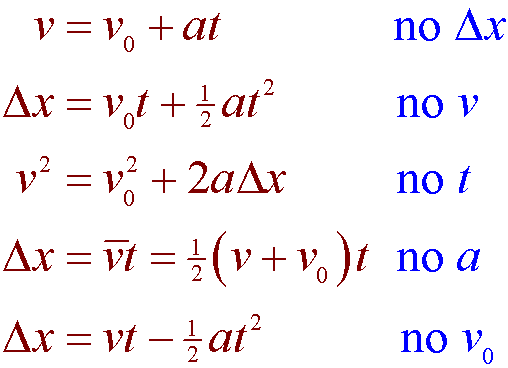Ace 2 Dimensional Kinematics Equations

Both two- and three-dimensional kinematics are simple extensions of the one-dimensional kinematics developed for straight-line motion in the previous chapter.
2 dimensional kinematics equations. Two Dimensional Kinematics Challenge Problem Solutions Problem 1. V x v xo a x t x x o v xo t 1212 a x t 2 vx 2 v x o 2ax x-x o. Table 31 Equations of Kinematics for Constant Acceleration Two-Dimensional Motion Figure 34 is analogous to Figure 33 except that now only the y engine is firing and the spacecraft accelerates along the y direction.
Because kinematics equations are used when the acceleration of the object is constant we can use a simple equation to determine the average velocity of an object. 8 rows Motion in two dimensions can be thoroughly described with two independent one. Toss an object from the top a building.
V f 2 v i 2 2ad. Such a motion can be described in terms of the kinematic variables y ay v y v 0y and t. Answers are given on the last page.
Two-dimensional projectiles experience a constant downward acceleration due to gravity. We can use this knowledge and our knowledge of integrals to derive the kinematics equations. Student Worksheet for Two Dimensional Kinematics After youve worked through the sample problems in the videos you can work out the problems below to practice doing this yourself.
Kinematics in 2D Motion in a plane vertical or horizontal But the motion in the x- and y-directions are independent except that they are coupled by the. Observe that motion in two dimensions consists of horizontal and vertical components. In x direction the Kinematics formulas is articulated as.
For example the average velocity vector is v d f d o t where d o and d f are the initial and final displacement vectors and t is the time elapsed. Velocity and acceleration vectors in two dimensions For motion in two dimensions the earlier kinematics equations must be expressed in vector form. First we need to establish that acceleration is represented by the equation a t -98.













